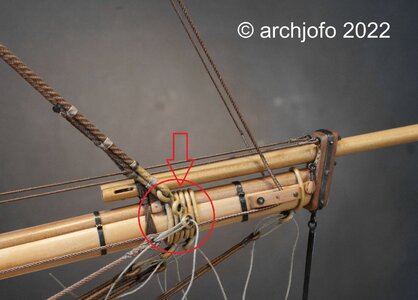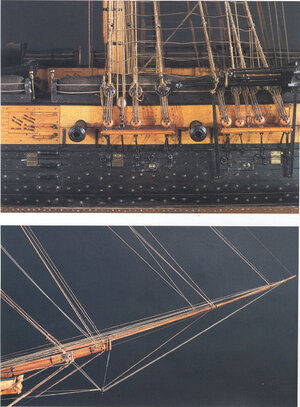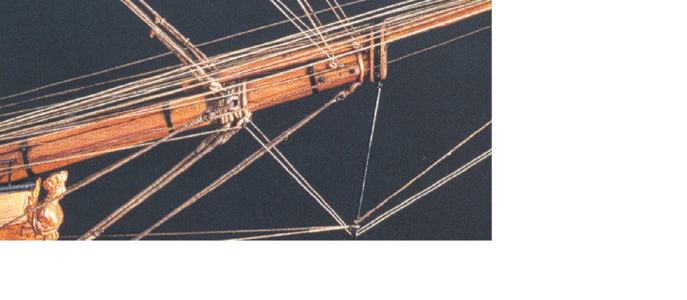Yes @Uwek I can only agree with you and this little notebook is fantastic, you can always find it again in Johann's diaries and it fascinates me personally again and again.Sorry to write it in these words:
"Wie geil ist das denn?......."
In the meantime we are used to the highest quality of your rigging works. This time I mean your "sketchbook"
your sketches have the same quality like your real work - WOW
Maybe you should get into contact with Didier Berti from ancre. I could imagine, that a book like our friend and member @Francis Jonet published once
Book review - Accastillage et gréement du modèle réduit d'un vaisseau de 74 canons" By Francis Jonet
Book Review: Accastillage et gréement du modèle réduit d'un vaisseau de 74 canons by Francis Jonet translated something like: Fitting and rigging a 74-gun model ship today I want to show you a great additional source, which was prepared on a private basis by my french modeling friend...shipsofscale.com
later on ancre published also an english version translated by our friend and member @Gilles Korent
Book review - "Fitting and rigging a 74-gun model ship" by Francis Jonet
Book Review: Fitting and rigging a 74-gun model ship Author: Francis Jonet, our member @Francis Jonet translated into English by Gille Korent, our member @Gilles Korent The front and back side of the Book This guide is a help to the construction of the equipment of a ship model of the...shipsofscale.com
-

Win a Free Custom Engraved Brass Coin!!!
As a way to introduce our brass coins to the community, we will raffle off a free coin during the month of August. Follow link ABOVE for instructions for entering.
You are using an out of date browser. It may not display this or other websites correctly.
You should upgrade or use an alternative browser.
You should upgrade or use an alternative browser.
La Créole 1827 by archjofo - Scale 1/48 - French corvette
- Joined
- Nov 10, 2019
- Messages
- 468
- Points
- 373

@Bosco45
@Uwek
@Tobias
Hello,
Thank you in advance for your nice comments and the many "likes".
I am always happy and motivated by positive feedback. Constructive criticism and suggestions are still very welcome.
Continuation: Standing rigging for jib and outer jib boom - Bâton de foc et bâton de clinfoc
First I had to attach the jib boom. I lined the jib boom passage in the cap of the bowsprit with a specially split leather (d=0.2 mm). The jib boom was placed on the prepared wooden pad or spacer so that it runs parallel to the bowsprit. Then I lashed the jib boom to the bowsprit analogous to bowsprit gammoning.
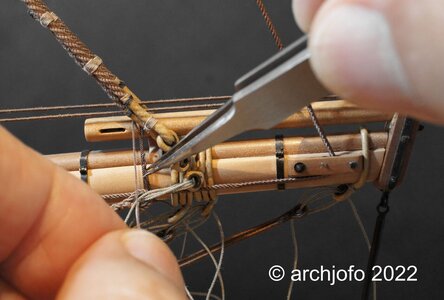
I added small details to the cap, as can be seen in the last picture. These are single blocks (l = 3.5 mm) on each side for the bowlines of the fore topsail. Next to the block you can also see the leather lining mentioned at the beginning.
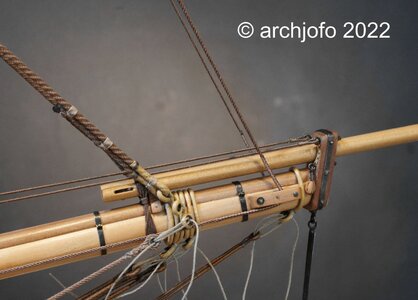
Sequel follows …
@Uwek
@Tobias
Hello,
Thank you in advance for your nice comments and the many "likes".
I am always happy and motivated by positive feedback. Constructive criticism and suggestions are still very welcome.
Continuation: Standing rigging for jib and outer jib boom - Bâton de foc et bâton de clinfoc
First I had to attach the jib boom. I lined the jib boom passage in the cap of the bowsprit with a specially split leather (d=0.2 mm). The jib boom was placed on the prepared wooden pad or spacer so that it runs parallel to the bowsprit. Then I lashed the jib boom to the bowsprit analogous to bowsprit gammoning.

I added small details to the cap, as can be seen in the last picture. These are single blocks (l = 3.5 mm) on each side for the bowlines of the fore topsail. Next to the block you can also see the leather lining mentioned at the beginning.

Sequel follows …
Johann, so many of us attempt to reproduce the details of a ship at scale. You have accomplished what we merely dream of. Unthinkable precision and skill.
- Joined
- Apr 20, 2020
- Messages
- 6,163
- Points
- 738

Dear Johann
I'm absolutely agree with the compliments of the friends before me, especially when I'm reading on your work in the respected German forum https://www.segelschiffsmodellbau.com/,
I have reached page 90. It is simply a pleasure to learn your most impressive and accurate work
I'm absolutely agree with the compliments of the friends before me, especially when I'm reading on your work in the respected German forum https://www.segelschiffsmodellbau.com/,
I have reached page 90. It is simply a pleasure to learn your most impressive and accurate work
Last edited:
Bonjour,
Toujours aussi impressionnant la finesse de vos réalisations, c'est vraiment du beau travail et les détails ne manquent pas ! vivement la suite :Oops:
Toujours aussi impressionnant la finesse de vos réalisations, c'est vraiment du beau travail et les détails ne manquent pas ! vivement la suite :Oops:
I envy,
Hello Thomas, I wanted to write the same thing yesterday. It's impressive how Johann makes it, he actually only very carefully removes the top layer.
okey,Was there a leather wrap on that date?
Hi Oktay Yaylacikoral!
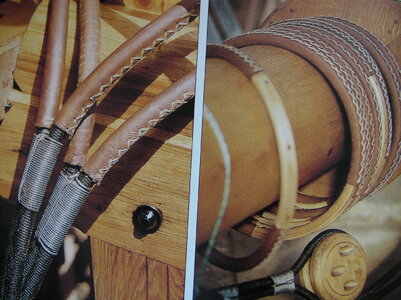
This leather sheathing as shown by Johann @archjofo can be seen in the book "Modeles historiques, Musée de la Marine" of Ancre, Volume 1, pages 178 to 191 on photos of the museum model.
Attention dear modeling friends! This rigging type does not apply to every nation, ship or century. Do not have doubts about your models!
Best regards
Thomas

This leather sheathing as shown by Johann @archjofo can be seen in the book "Modeles historiques, Musée de la Marine" of Ancre, Volume 1, pages 178 to 191 on photos of the museum model.
Attention dear modeling friends! This rigging type does not apply to every nation, ship or century. Do not have doubts about your models!
Best regards
Thomas
Last edited:
Superbe réalisation !  quelle finesse dans la couture !
quelle finesse dans la couture !
- Joined
- Nov 10, 2019
- Messages
- 468
- Points
- 373

@Oktay Yaylacıkoral
Hello,
sorry I'm only now able to respond to your question.
Thankfully, our two colleagues have already answered this question so far. Also many thanks to Thomas for the wonderful pictures, which I didn't know either.
I would just like to add that at that time, and still today, many elements in the rigging were leather-coated. The leather was not tarred but greased to protect it from the wet.
For model making I use fine goatskin that I split again to about 0.2 mm thick. For this I made a simple device, as can be seen in the following picture.
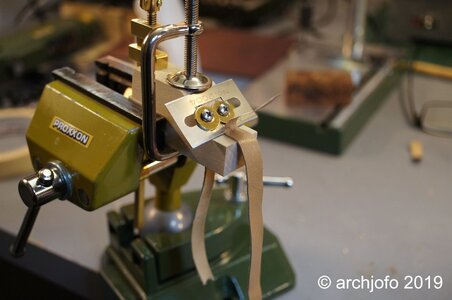
Hello,
sorry I'm only now able to respond to your question.
Thankfully, our two colleagues have already answered this question so far. Also many thanks to Thomas for the wonderful pictures, which I didn't know either.
I would just like to add that at that time, and still today, many elements in the rigging were leather-coated. The leather was not tarred but greased to protect it from the wet.
For model making I use fine goatskin that I split again to about 0.2 mm thick. For this I made a simple device, as can be seen in the following picture.

DİKİŞ VEYA YAPIŞTIRMA VAR MI?YOKSA YARIŞIYOR MUSUNUZ?VEYA SARILMIŞ MI?
Bonjour,
Bravo pour cette astuce et l'outil que vous avez fabriquez ! il faut simplement trouver de la peau de chèvre ! ou de l'imitation de cette peau
ou de l'imitation de cette peau
Bravo pour cette astuce et l'outil que vous avez fabriquez ! il faut simplement trouver de la peau de chèvre !
Wonderful work - amazing quality




